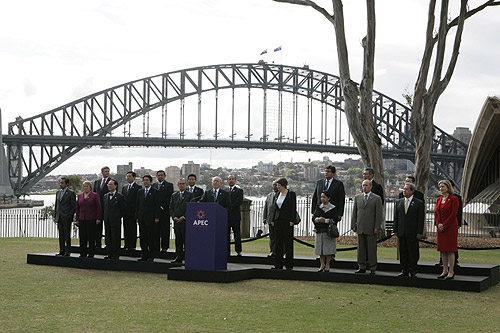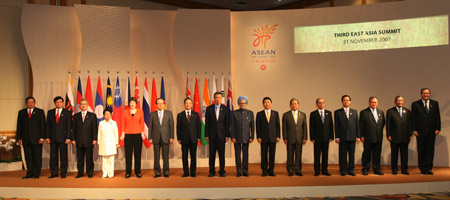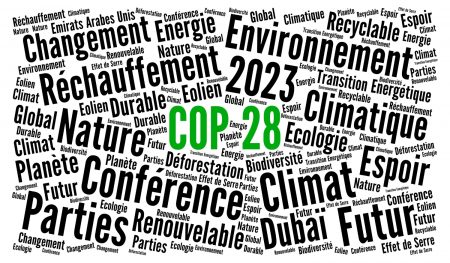私的京都議定書始末記(その11)
-APEC、東アジアサミットでの議論-
有馬 純
国際環境経済研究所主席研究員、東京大学公共政策大学院特任教授
ハイリゲンダムサミットでは首脳声明の策定プロセスを直に見ることはできなかったが、2007年9月のAPECサミットと11月の東アジアサミットについては、首脳声明策定プロセスを体験することができた。APECでは「気候変動、エネルギー安全保障、クリーン開発に関するシドニーAPEC首脳声明」、東アジアサミットでは「気候変動、エネルギー、環境に関するシンガポール宣言」を出すことが予定されており、APECエネルギー大臣会合や東アジアサミットエネルギー大臣会合の合意事項を首脳声明にも反映させることは私のミッションだったからだ。
APECの首脳声明プロセスで、豪州が「売り」にしたかったのは一連の数値目標であった。省エネ分野では「2030年までに2005年比でAPEC地域のエネルギー原単位を25%改善する」という案が盛り込まれていた。これは5月のエネルギー大臣会合共同声明には入っていなかったものであり、首脳声明ダマと位置づけられていた。ところが首脳声明のドラフティング会合で、中国が猛烈に反対した。エネルギー大臣会合では中国代表は国家発展改革委員会のエネルギー部局出身であったが、今回は外交部で、その発言内容は「共通だが差異のある責任」「先進国の歴史的責任」等など、APECの場に国連プロセスが引っ越してきたような感があった。
中国が強硬に反対したのは2005年比25%改善という数字が達成困難だからではない。1990年から2005年までにAPEC地域のエネルギー原単位は25%以上改善しており、中国を初めとする域内途上国の急速な経済成長、古い設備の更新需要を考えれば、追加的な努力をしなくても2030年までに25%改善というのは容易に達成できるはずだ。事実、APECエネルギー研究センター(APERC)は自然体でも2030年までに38%の改善が見込まれるとしている。中国が強く反対した理由は、数字の中身はともかく、先進国、途上国が両方含まれるAPEC地域全体の目標値を合意するという考え方そのものであったのだろう。
豪州は「regional aspirational goal であって強制力のあるものではないから」と説得に努め、ようやく「highlight the importance of improving energy efficiency by working towards achieving an APEC-wide regional aspirational goal of a reduction in energy intensity of at least 25% by 2030 (with 2005 as the base year)」という表現が合意された。また首脳声明付属文書の中には省エネ関連で以下の文言が合意された。
- ●
- Agree to work towards achieving an APEC-wide regional aspirational goal of a reduction in energy intensity of at least 25% by 2030 (with 2005 as the base year)
- ●
- Encourage all APEC economies to set individual goals and action plans for improving energy efficiency, taking into account this aspirational goal, and reflecting the individual circumstances of different economies
- ●
- Agree to facilitate and review progress through the voluntary APEC Energy Peer Review Mechanism, as established by the APEC Energy Ministers in May 2007, with a report back to APEC Leaders in 2010.
エネルギー大臣会合で盛り込んだ省エネ目標、行動計画の策定や、省エネピアレビューは無事、盛りこまれた。しかし、APECワイドの数値目標に交渉の重点が置かれたため、セクター別アプローチが明確に入らなかったのが心残りだった。
ただエネルギー分野では担当大臣間で合意ができているので、事態はずっとましだった。本当にもめたのは気候変動部分、特に将来枠組みのあり方や、全地球温室効果ガス半減目標等の扱いである。

ハイリゲンダムサミットと同様、APEC首脳声明にもポスト2012年の枠組みに関する言及がある。その該当部分を引用する。
Future International Action
We reaffirm our commitment to the UNFCCC. Based on UNFCCC principles, we believe the following must underpin an ①equitable and effective post-2012 international climate change agreement.
Comprehensiveness
We need concerted international action with ②all economies contributing to shared global goals in ways that are equitable, environmentally and economically effective.
Respect for different domestic circumstances and capacities
The future international climate change arrangement needs to reflect differences in economic and social conditions among economies and ③be consistent with our common but differentiated responsibilities and respective capabilities.
Flexibility
To ensure a comprehensive global effort, we support a flexible arrangement that recognizes diverse approaches, and supports practical actions and international co-operation across a broad range of areas relevant to climate change. We support domestic actions which ④make measurable contributions to a shared global goal, and underline the importance of the effective operation of market mechanisms.
長々と英文を引用してしまって恐縮だが、気候変動交渉に限らず、国際交渉では合意文書の表現振りをめぐって熾烈な争いが演じられるということを説明するためのもので、暫くお付き合いいただきたい。下線部①は将来枠組みの基本的性格に関するもので、「次期枠組みは京都議定書のように先進国だけが義務を負うものではなく、より幅広い国が削減努力をすることが effective」 というのが議長国豪州の思いだったのだろうが、そこに中国を初めとする途上国がequitable を入れることを主張した。気候変動交渉の世界で equity もしくは equitable という表現を使う場合、「先進国はこれまで地球を汚してきたのだし、途上国はこれから発展する権利があるのだから、先進国が率先して義務を負うのが公平である」という意味を持つ。
下線部②も同様で、「全ての国が environmentally and economically effectiveな形で、共有されたグローバルな目標に向けて貢献する」という豪、米、日、加等の先進国の考え方に対し、equitable を挿入することにより、押し返した形だ。
下線部③の「common but differentiated responsibilities and respective capabilities」は、途上国が気候変動交渉で数え切れないほど繰り返す文言で、最初の4語の頭文字をとってCBDRとも言う。要するに「自分たちと先進国とでは責任の負い方が違う」ということで、先進国だけに義務を負わせる論拠として使われている。下記に引用するハイリゲンダムサミットのコミュニケと比較していただきたい。そこではCBDRや先進国のリーダーシップをパラ前段で示しつつも、「We recognize, however, 」最後の1文を加えることで、全ての国の参加の必要性を強調する構成となっていた。更に「全ての主要排出国を含む包括的なポスト2012合意(ポスト京都合意)を達成するため」と将来枠組みのビジョンも明記していた。
We stress that further action should be based on the UNFCCC principle of common but differentiated responsibilities and respective capabilities. We reaffirm, as G8 leaders, our responsibility to act. We acknowledge the continuing leadership role that developed economies have to play in any future climate change efforts to reduce global emissions, so that all countries undertake effective climate commitments tailored to their particular situations. We recognize, however, that the efforts of developed economies will not be sufficient and that new approaches for contributions by other countries are needed.
We are committed to moving forward in that forum and call on all parties to actively and constructively participate in the UN Climate Change Conference in Indonesia in December 2007 with a view to achieving a comprehensive post-2012 agreement (post Kyoto-agreement) that should include all major emitters.
翻って上記のAPECバージョン「The future international climate change arrangement needs to reflect differences in economic and social conditions among economies and be consistent with our common but differentiated responsibilities and respective capabilities」を見ると、最後にCBDRがでんと陣取って睨みをきかせる形になっており、ハイリゲンダムバージョンよりも途上国の立場が色濃く出た形だ。
下線部④は「共有されたグローバルな目標に対する計測可能な貢献」というもので、ここでは先進国の考え方が色濃く反映された表現だ。特に measurable という表現は、これらの会合の直後である2007年12月のCOP13(バリ)でも重要な役割を演ずる。
また、APEC首脳声明では「共有されたグローバルな目標」について以下のような記述となった。
We agree to work to achieve a common understanding on a long-term aspirational global emissions reduction goal to pave the way for an effective post 2012 international arrangement. We appreciate the efforts of Japan and Canada in proposing a long-term global goal.
安倍総理が提案した2050年半減という具体的な数字には触れず、「グローバルな長期目標を提案した日本とカナダの努力を多とする」でとどめた形だ。ハイリゲンダムサミットで ”We will consider seriously the decisions made by the European Union, Canada and Japan which include at least a halving of global emissions by 2050” と半減目標を明記したのと比較すれば後退した表現となった。中国等が、「特定国の提案内容をいちいち言及することは不要」との理由で頑強に反対したためだった。その実は地球全体の目標は途上国にも及ぶため、これを忌避したかったということだろう。
このように先進国、途上国が両方参加するAPECというフォーラムの性格を反映し、気候変動については、ハイリゲンダムサミットで出た先進国色の強いラインを中国等の途上国が押し返す構図となった。それがより顕著に出たのが11月にシンガポールで開催された東アジアサミット首脳会合である。
私が担当したエネルギー部分のうち、省エネ目標・行動計画、セクター別アプローチについては、以下のようになった。
Intensify ongoing cooperation to improve energy efficiency….. based on the Cebu Declaration and the Joint Ministerial Statement of the 1st EAS Energy Ministers Meeting on 23 August 2007 by:
- a.
- Working towards achieving a significant reduction in energy intensity;
- b.
- Implementing the measures recommended by the EAS Energy Ministers, including formulation of voluntary energy efficiency goals by 2009….
「セブ宣言や東アジアサミットエネルギー大臣会合の共同声明を踏まえて省エネ協力を強化する」という表現になっているため、共同声明に盛り込まれた要素を全て再掲することはせず、「自主的省エネ目標の策定」が例示された。セクター別アプローチも書き込みたかったが、それも含め、「エネルギー大臣が提唱した方策を実施する」という表現が入ったことで矛を収めざるを得なかった。

しかしAPECと同様、首脳会合に先立つエネルギー大臣会合で合意が得られていることは強みであった。ここでも最も紛糾したのは気候変動の書きぶりだった。将来枠組みに関連するパラグラフを列挙すると以下の通りである。
Stress that all countries should play a role in addressing the common challenge of climate change, ①based on the principles of common but differentiated responsibilities and respective capabilities; and that developed countries should continue to play a leading role in this regard.
Carry out individual and collective actions, in a broad range of sectors, to address climate change, including green house gas emissions, ②considering the principles of equity, flexibility, effectiveness and common but differentiated responsibilities and respective capabilities, as well as reflecting our different social and economic conditions.
Participate actively in the process of developing ③an effective, comprehensive and equitable post-2012 international climate change arrangement under the UNFCCC process.
下線部①ではCBDRと先進国の先導的役割が特筆大書される。下線部②ではflexibility, effectiveness と並んで equity と又してもCBDRが入っている。下線部③の2012年以降の枠組みの形容詞としては、effective, comprehensive and equitable で、equity が再び顔を出す。ハイリゲンダムサミットの 「with a view to achieving a comprehensive post-2012 agreement (post Kyoto-agreement) that should include all major emitters」 と比較すると、「全ての主要排出国の参加」が抜け落ち、equitable が入ったことで、途上国色がより強まっている。 全体としてAPECよりも更に途上国の主張が反映された感がある。議長国が豪州かシンガポールかの違いもあるし、東アジアサミットの事務局的役割を果たすのがASEAN事務局であることも影響していたのだろう。
なお、共有されたグローバル目標については、APECの表現が踏襲された。
Support the work to achieve a common understanding on a long-term aspirational global emissions reduction goal to pave the way for a more effective post-2012 international arrangement
APECと同様、半減目標を含む日本提案を評価するとの一文を入れようと試みたが、途上国側の主張により、共同声明前文の中に以下のような一文が入るにとどまった。
Appreciating the efforts of various East Asia Summit participating countries, including Australia, China, India, Indonesia, New Zealand, Japan and ROK, which have contributed to the global debate to address climate change.
APECでは長期目標に関するパラグラフの末尾に”We appreciate the efforts of Japan and Canada in proposing a long-term global goal” という一文が入り、日本提案が長期目標に関するものであることが明確になっていたが、以下の文章は、長期目標のパラグラフとは別のところに出てくるため、両者の関連性が不明確だ。その上、途上国が「自分たちもグローバルな議論に貢献している」と主張した結果、国名がずらずらと並ぶ形になった。
2007年6月のハイリゲンダムサミットから9月のAPECサミット、11月の東アジアサミットと続く一連の首脳プロセスにおける気候変動関連の議論は、つまるところ12月のCOP13に向けた前哨戦であった。首脳会合で一度採択された表現は前例としてその後の首脳会合やマルチ会合のドラフト交渉にも強い影響を与える。だからこそ、先進国も途上国も必死で自分たちの色を出そうとするわけだ。
私はエネルギー部分担当なので、気候変動部分のドラフト交渉はバックベンチャーとして参加していたのみであったが、「これは先が思いやられる」と感じ、暗澹たる気持ちになった。1ヶ月後にバリ島で開催されるCOP13に資源エネルギー庁から参加することが決まっていたからだ。

















